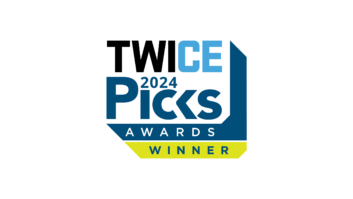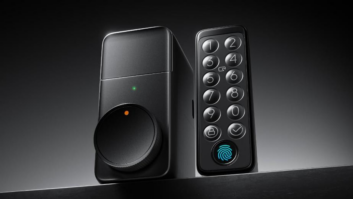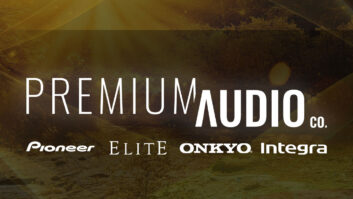LAS VEGAS – Slowly, the UltraViolet digital content locker system
intended to let consumers pay one price to purchase movie and TV titles for
playback on multiple home and hand-held devices said the system is solidifying
into a compelling use model, supporters said a press conference here Tuesday.
Mark Teitell, executive director and general manager of the
Digital Entertainment Content Ecosystem (DECE), a group of more than 70
companies connected to the film and CE industries to develop and promote
UltraViolet, said the system made a lot of progress following its launch in 2011,
having three studios deploy while a fourth – Paramount – announced it will soon
be marketing UltraViolet content as well.
Consumers today using UltraViolet can already stream and download
content to PCs, Macs, Android and iOS handheld devices.
But the late launch of UltraViolet last year coupled with the
need to use a computer to sign up, get a code to authenticate titles and
maintain an UltraViolet library left a number of early reviewers frustrated
with the process.
So far around 20 movies have been released with UltraViolet
rights but the studios are expecting that at least 100 titles will be released on Blu-ray this year
with UltraViolet rights.
Still, Teitell said that even in the early stages, 750,000
household accounts (more than 1 million people) had registered as UltraViolet
early adopters.
The numbers should grow significantly in 2012, the DECE contends,
following announcements here this week that Samsung and Panasonic will market
Blu-ray Disc players with built-in UltraViolet support.
Samsung’s player will leverage UltraViolet to perform three
different tasks – using a Flixster player app the BD player will view what is
in a user’s personal UltraViolet library, select a title and begin streaming it
onto a TV screen.
The Samsung device will even let consumers add certain movies
they bought on DVD or Blu-ray before UltraViolet existed to their online
collection for an unspecified fee.
Teitell said the new Samsung and Panasonic devices will help
UltraViolet families create UltraViolet rights in their family libraries for
the first time.
“When someone has bought a Blu-ray Disc that has UltraViolet
rights, the new players will automatically recognize that and facilitate an
on-screen command so a person can register and log into an UltraViolet account
and then leave themselves logged in and add that right to their rights
library,” Teitel said.
So far, consumers have been required to follow the instructions
on a Blu-ray package, go to a Web site and enter a code to stream UltraViolet
content. But the new Samsung player for the first time will read the Blu-ray
Disc and help add that right to a user’s library, automatically.
In addition Samsung’s and Panasonic’s UltraViolet Blu-ray players
will have Flixster pre-installed enabling users who already have UltraViolet
libraries created to use the Samsung or Panasonic players (and certain
Panasonic smart TVs as well) to access that library menu and select and play
that content.
Also during Tuesday’s press conference Bill Carr, Amazon’s
executive VP, announced that Amazon.com will soon start selling digital
downloads of movies from one undisclosed studio using the UltraViolet format. The
move means that users will not be limited to using DVD or Blu-ray Discs
carrying UltraViolet codes to access streaming titles online with software from
the Warner Bros.-owned Flixster service.
Meanwhile, the DECE has also been trying to eliminate another
bump in the road in developing a common file format for downloaded content
files that will be interchangeable on a variety of different platforms and
device brands. The standard format would do away with the need to re-download a
video with a different format type to play on various devices.
“Think of having a movie file on a USB stick that can be used
with device brand X or device brand Y,” Teitell explained. “Up till now if I
wanted to play a downloaded file, I would have been able to because I had an
UltraViolet right, but I may have had to go with a different media formats to
play it on all of the various devices that are around. When this common file
format is ready you will have one file that will work with all UltraViolet
devices, as an added convenience.”
Teitell said the common file format has been of high interest to consumer electronics
manufacturers, since a company called Cast Labs has developed an Android app
able to play a real movie file format developed to the common file format spec.
“We expect a number of companies in the industry to start to
deploy this technology now so that we can roll it out to consumers during
2012,” Teitell said. “The tech, specs and design are all done for this but this
will be the first time that the technology has even been showcased about it.”












